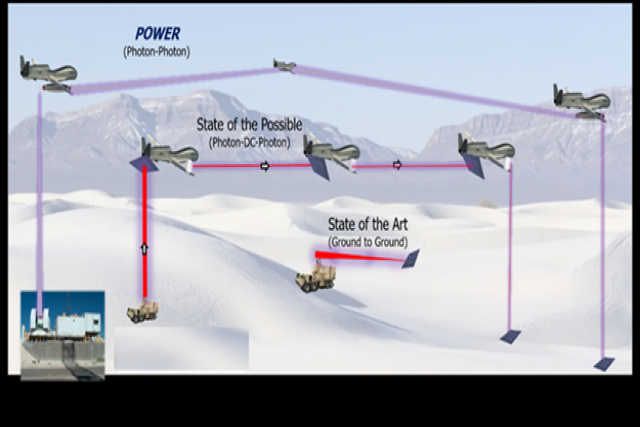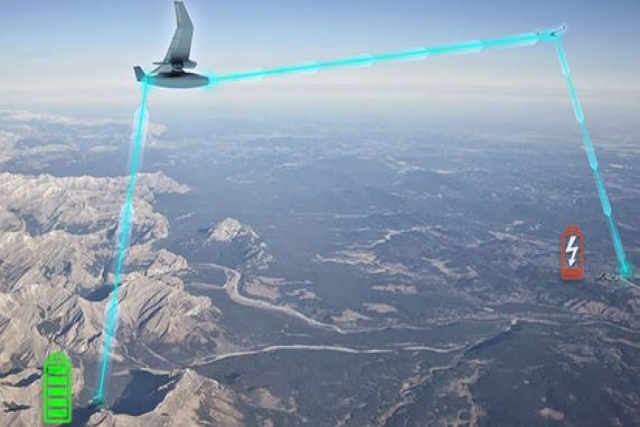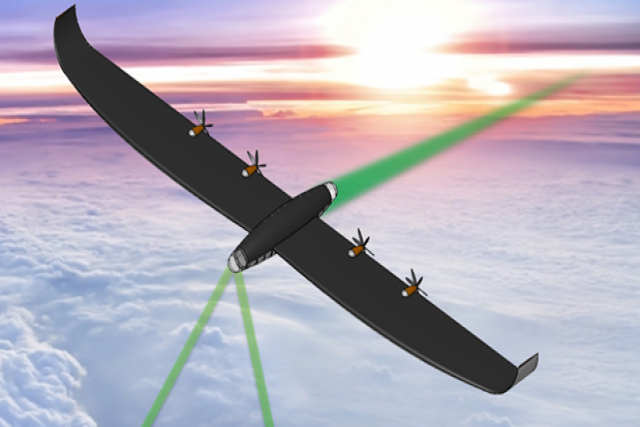RTX to Build Wireless Power Delivery System for UAVs, Sensors
POWER project could enable small inexpensive platforms with significant capabilities such as unlimited range or endurance.

Raytheon, a division of RTX, has secured a $10 million contract from DARPA to develop a wireless airborne relay system as part of the Persistent Optical Wireless Energy Relay (POWER) program, aimed at enhancing energy distribution for unmanned systems, sensors, and other military applications in contested environments.
The initiative aims to enhance energy distribution using power beaming for quick energy transport within a resilient, multi-path network.
Under the two-year contract, Raytheon will design an airborne relay system to create "webs" capable of harvesting, transmitting, and redirecting optical beams. These "webs" will facilitate the transmission of energy from ground sources to high altitudes, supporting the precision, long-range operation of unmanned systems, sensors, and effectors. The technology aims to reduce the military's reliance on fuel and associated delivery challenges.
Colin Whelan, President of Advanced Technology at Raytheon, emphasized the importance of energy in the modern battlespace, stating, "When operating in contested environments, energy may not always be available or abundant, making the need to generate, store and re-distribute it vital."
The POWER program, part of DARPA's Energy Web Dominance portfolio, seeks to establish dynamic energy transport across various domains. By achieving energy web dominance, military commanders can reroute energy swiftly, enabling the pivot of capability near-instantaneously without reconfiguring supply lines.
Work on the POWER program is taking place in El Segundo, California.
The initiative aims to design and demonstrate airborne optical energy relays that can couple ground-sourced lasers with high-altitude, efficient long-range transmission. These relays are essential for creating future multi-path wireless energy networks.
The technology holds promise for transforming military platforms, allowing small, inexpensive platforms with significant capabilities such as unlimited range or endurance. Power beaming, a foundational concept of the initiative, leverages the same physics used in wireless communication.
The program is set to address conversion efficiency challenges by developing power beaming relays that redirect optical energy transmissions while selectively harvesting energy as needed. DARPA's POWER program is a three-phase development effort culminating in a compelling energy relay flight demonstration.











